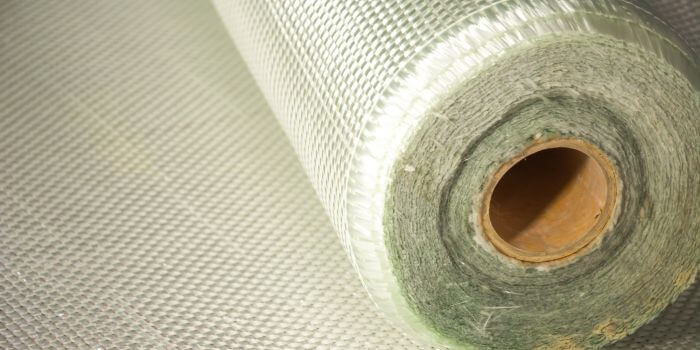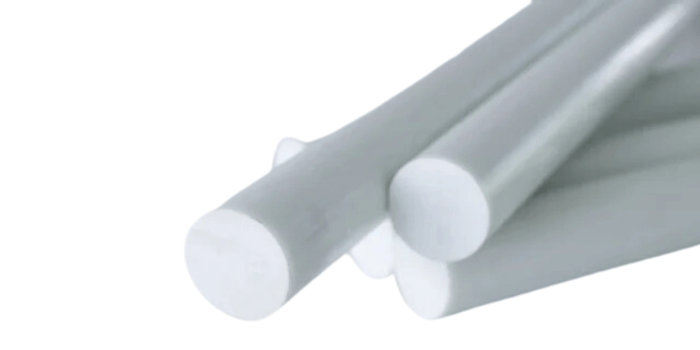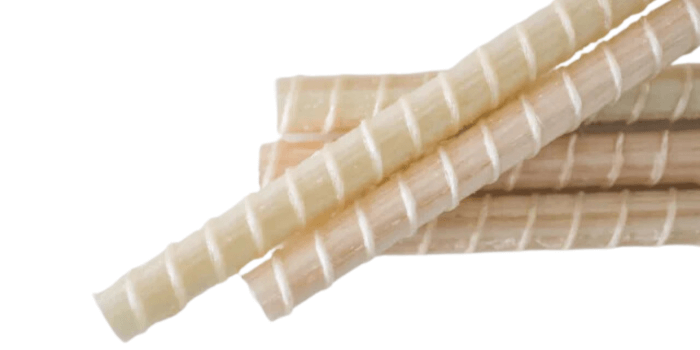Table of Contents
Fiberglass reinforced Materials
In modern construction, the application of fiberglass reinforced materials is one invention that has gained popularity.
These materials are a substitute for traditional steel reinforcement because of their many advantages, such as glass fibre reinforced (GFR) dowels and fibreglass rebar. We will go over the products below.
What are glass fiber reinforced materials?

These are materials that have small glass fibers mixed in with a polymer matrix. These fibers are then further woven into a mat or fabric and combined with a resin to create a composite material.
The finished product has great properties which include high strength and stiffness, which make it great for construction.
Other than other glass fiber-reinforced (GFR) materials, two other applications that are becoming very popular in the construction industry are glass fiber-reinforced dowels and fibreglass rebar. Let’s explore each of these deeper.
Glass Fiberized Dowels
In building concrete structures, dowels are important because they distribute the load and stop neighboring concrete parts like pavements and slabs from moving differently.
Even though glass fiber-reinforced dowels have a couple of benefits over steel, traditional dowels are usually made from steel.
Glass fiber reinforced dowels, are very strong and lightweight, which allows them to be simple to handle and install without sacrificing their rigidity.
They have great corrosion-resistant qualities, making them very good for long-term solutions, especially in environments where typical steel dowels may eventually rust.
Applications

Concrete pavement transverse joints: To guarantee appropriate load transmission and joint stability, fiberglass dowels are commonly used in these joints.
Expansion joints and contraction joints: These dowels are important for the function of expansion joints and contraction joints because they keep steps from forming and enhance ride comfort for cars that are travelling on the pavement.
Road Construction: Fiberglass dowels are frequently used in road construction projects, like building roads, bridges and airport runways, due to their dependable weight transmission and joint stability.
Fiberglass Rebar
They provide stability and tensile strength hence, reinforcing steel bars, or rebar, are crucial parts of reinforced concrete buildings.
However, traditional steel rebar is at risk of corrosion, which over time could affect the rigidity of concrete constructions.
Fiberglass rebar is a strong substitute that solves many issues that steel reinforcement has. Glass fibers are combined with a polymer resin matrix to make a high-strength composite material that is known as GFRP (Glass Fibre Reinforced Polymer) rebar.
Applications
Building Construction:
Fiberglass highly favor building construction since they are simple to handle and install. Since they are lightweight, they are easier to move and need less labor while building.
Also, by reducing the need for ongoing maintenance and replacement, fibreglass rebars enhance the overall sustainability of structures.
Road Construction:
As fiberglass has very high corrosion resistance, it favors the building of roadworks and motorways. It has better durability and strength than steel, hence this makes it perfect for this.
Industrial Engineering:
In chemical industries where there are concrete tanks that require reinforcement, fiberglass is used as it is great at handling high temperatures. Fiberglass is recommended, as steel expands and makes cracks in concrete.
Earthquake proofing:
Due to the excellent strength and non-conductive qualities of fiberglass, it is used in earthquake-proofing projects to protect buildings from instances of earthquakes.
Also, as it is lighter than steel, it does not increase the weight of buildings during reinforcements.

Here are the technical specifications;
Apart, from being more environmentally friendly compared to steel, fiberglass is also lightweight and highly durable.
It performs well with a strength of 1000 MPa. Consists of 70% fibers. Additionally fiberglass offers a tensile strength range between 600 and 1600 N/mm².
Exhibits remarkable immunity to radio waves. Moreover it has a conductivity of 0.25%. Now lets delve deeper into these specifications;
Durability; With a strength of 1,000 MPa fiberglass boasts durability that surpasses steel by 20%.
Fiber Content; Fiberglass contains an amount of fibers (70%) resulting in qualities such as high rigidity.
Electromagnetic Interference; Fiberglass proves to be suitable for situations where electromagnetic interference’s problematic due to its immunity to radio waves.
Tensile Strength Range; Depending on your needs fiberglass can provide a tensile strength ranging from 600 to 1600 N/mm².
Thermal Conductivity; With its insulation properties fiberglass helps reduce temperature variations, within concrete buildings by exhibiting low thermal conductivity of only 0.25%.
The Advantages of Glass Fiber Reinforced Products
Resistance to corrosion
Resistance to corrosion, is an attribute of glass fibre reinforced (GFR) products making them highly advantageous, in environments that involve chemicals, moisture or seawater.
Their ability to withstand corrosion sets them apart. In contrast to steel reinforcement, which is sensitive to rust and degradation over time, GFR materials are resistant to corrosion even under the most extreme circumstances.
For example, GFR materials offer long-lasting durability, eliminating the need for regular maintenance and replacement in coastal settings where the salt in the air accelerates corrosion.
Additionally, GFR reinforcement guards against chemical erosion in industrial environments like chemical processing plants and wastewater treatment plants, where exposure to corrosive chemicals is a risk.
Lightweight
The lightweight characteristics of GFR materials improve construction efficiency while also reducing logistics.
Glass fibers are much lighter than steel, which lowers transportation costs and makes handling them on building sites easier.
This weight advantage results in shorter installation timeframes and less labor needed, which saves money on the project.
Electrical Insulation
GFR materials are very helpful in applications where electrical insulation matters most because of their natural non-conductivity.
For example, in building bridges, where electrical conductivity may interfere with fragile machinery or provide a safety risk, GFR reinforcement guarantees reliability without affecting the structure’s reliability.
Similarly, GFR materials preserve signal reliability and integrity by preventing electromagnetic interference in structures containing electronic equipment or telecommunications infrastructure.
Conclusion
Fibreglass rebar and glass fiber-reinforced dowels are two creative ways of satisfying the changing demands of the building sector.
Engineers and builders may create strong, long-lasting buildings with little environmental effect by using the special qualities of these materials.
Also, Read
Difference Between Cinder Block And Concrete Block
What is Skirting? – Purpose & Types
18 Most Popular Types of Wood And Their Uses
What is CMU Wall? CMU Wall Construction